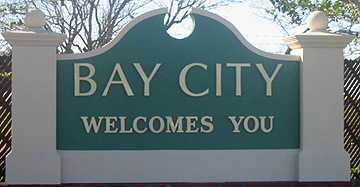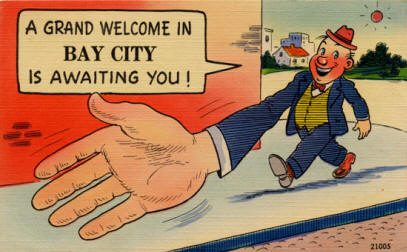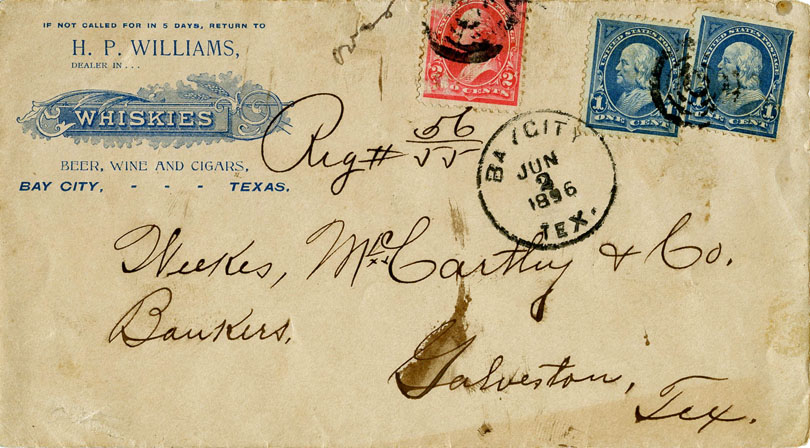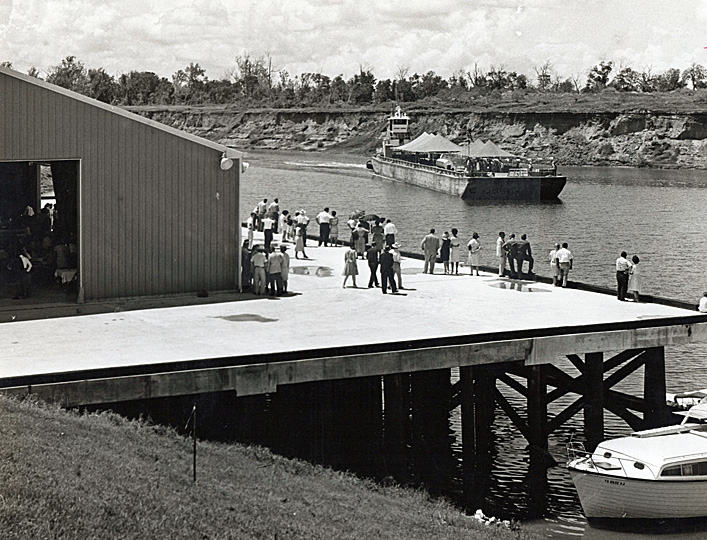|
Bay City Information |
||
 |
||
 |
||
Bay City For Kids
|
||
 |
||
|
"Bay City," a name often misleading to strangers, is twenty-five miles from the beach and the Gulf of Mexico. It is so named because the town lies in the center of the vast area of prairie land which has been known as Bay Prairie since the days of Stephen F. Austin in the early 1820's.J. A. Allhands book, Gringo Builders, published in 1931 tells the beginning of Bay City as follows:You only have to go back to a summer day in 1894 to get the beginning of Bay City. Out of the raw material of rich Bay prairie, from whence Bay City receives its name, and the facile minds of G. M. Magill and N. M. Vogelsang, was this city born. In that day there was no settlement of any kind near, not even a shack, and it was rather unpropitious time, too, for that was a year of depression and unemployment when the country was tramped by idle mobs, a time when the famous Coxey Army of jobless men was marching across the country to Washington, D. C. Only a few months previous, commercial failures in the United States had been rampant, when over five hundred banks and loan companies went down in the crash, and receivership over-took some 150 railroads. The broad prairie land was still untouched and unused except for cattle grazing. The farming area was· confined to Caney Bottoms, where an abundance of corn, cotton and cane were produced, and, until claimed by the flood waters of the Colorado, there had been some little settlement down the east bank of that stream . A tract of 640 acres, twenty miles from the coast and near the Colorado River was acquired, one-half of which was purchased from D. P. Moore for the sum of one dollar per acre, and, as a further consideration, some lot concessions in the town-to-be. In 1894 the Bay City Town Company was formed by the following men: G. M. Magill, N. M. Vogelsang, N. King and N. Swickheimer. Many cities "just happen," but not so with Bay City. Cutting the tall grass and weeds, so a survey could be made and the lots properly staked , Magill & Vogelsang, resident managers, proceeded to layout a model townsite. Today its wide, regular streets, laid out before traffic control was even thought of, are paying big dividends on their foresightedness. The unbridged Colorado was a formidable barrier except for Elliott Ferry, which for years had operated less than two miles from the present Bay City. In the days before, and since 1875, D. P. Moore and later his brother J. D. had run a crossroads general store one mile east of this ferry, and here also was conducted the post office of Elliott. Realizing the powerful "pull" of the press, it was in the upper one-half story of this store building that the Bay City Breeze made its first appearance in the summer of 1894, with Vogelsang as publisher and Magill the editor. Those ambitious promoters not only desired to make this the metropolis of the county, but its county seat as well. Under their faithful and forceful leadership the Breeze fostered every endeavor for the good and upbuilding of the new town. Its press agents immediately seized upon the exploitation of Bay City as the proper location for the county capitol, and as an inducement for its removal from Matagorda they offered to erect a frame court house and donate it to the county. The days passed and before long, a petition having been presented Judge E. D. Rugely, Sr., a special election was duly ordered for September 18, 1894, for the purpose of voting on this removaL At that time the population of the entire county was about 3,000 persons, of which fully seventy-five percent were negroes. Some historical controversies have been waged in Texas over just such proposed removals, but this one was the exception. Everything must have been ripe for a change. Matagorda, a settlement since 1829 (and perhaps near the site of La Salle's camp, who, missing the Mississippi, found Matagorda Bay), had been a town so long that it had developed the shaking palsy of old age. It sat back complacently and made little or no protest to the change with the result that the vote for its removal went over big. At that time this embryo town of Bay City consisted of only a single frame building, housing the newspaper and townsite office. It might be said the citizens had voted to remove the seat of the county's government to a stake on the prairie. Estimating the frame court house to cost $3,000, this sum was paid to the county by the Townsite Company, and that nucleus, along with additional funds, enabled the county commissioners to erect a county structure. Pits were opened and the bricks were made and burned at the townsite's edge. When the new hall of justice was finally ready for occupancy, its memorable opening was celebrated by a grand baiL At the start, however, Bay City had no place to house its great prize and the first building to occupy the court square was a box house, which had been used as a grand jury room at Matagorda. This tiny structure, made of one by twelve lumber, was hauled across the country to the new townsite and placed on the northwest corner of its square. This stuffy little building first served as a county clerk's office. At an early date Judge T. J. Hamilton erected a two-story building across from the northwest corner of the square, on lots now occupied by Badouh's big store. This structure was used as a temporary court house and became the focus of the community's religious life, as a union church and Sunday school held forth there. J. D. Moore immediately moved the post office and a small stock of groceries from Elliott into a squatty one story shack on the site now occupied by the post office building. D. P. Moore moved his dry goods and clothing stock up from Matagorda. Old timers counting noses find D. P. Moore still in business (1931). He has served that section for something over half a century, and has been in business longer than any other merchant in Matagorda County. Preceding J. D . Moore by a few days, W. E. Sayers, hauling his groceries, etc., in by wagon, was the first hopeful merchant to set up a crude mercantile establishment in the middle of the same block. It wasn't much of a store according to the standard of Bay City stores of today, but it was a start. Finally the butcher, the baker and candlestick maker were lured to the new town. This was during the Southwest's saloon days, when almost every town had one or more of them, hence very shortly one of these dispensaries of rosebud nose paint opened across the street from the townsite office, and this particular line continued to expand until Bay City had six booze joints for whites and one for negroes. But the old order passeth- all of those saloons faded from the pictures, when they were forever outlawed by the vote of 1904. Further recalling the hallowed days agone, Postmaster J. D. Moore received the mail from Wharton by hack when the upgraded road was passable, and by horseback when the hack could not make it. At first W. M. Holland, the mayor, and marshall W. A. Williams piloted the destinies of this new town. Five years had scarcely lapsed until, with neither rail nor water transportation, it found its sister city Van Vleck, with the aid of the railroad terminating there, slipping in at the back door and all but pillaging it of its much coveted county seat.To give an idea of the actual growth of Bay City from a prairie to a small town, the Bay City Breeze described the following business establishments six months after the election in September of 1894.
Austin House Hotel, under the
management of
Mrs. William
E. Austin, a
two-story hotel in the
shape of an L
fronting
60 ft.
on
7th street
and
40 ft. on
Avenue
E,
besides
a kitchen. Homes built in Bay City by May of 1895 were: N. M. Vogelsang, 9 room residence, a beautiful modern home, cost, $2,500, corner of Avenue G and Fourth Street.Edgar Rugeley, two story residence of ten rooms, occupied as a private boarding house, Avenue F. T. J. Hamilton, one four room cottage, one three room cottage, two 2 room cottages, one ice house; all rented . W. E. Moore, one four room cottage. Ira G. Lord, one three room cottage. Charles Franz, one three room cottage. R. N. Rogers, one two room cottage. A. D. Hensley, Z. J. Walker, and J. A. Sullivan each had a small cottage. T. Y. Spencer, one two room cottage. The above does not include barns or any improvements except places of businesses and residences and other improvements under contemplation and contract.Thus, the city grew up around a plan that centered around the courthouse and that plan exists today. The buildings and owners have changed but the city plan has not. The town today is a far cry from the tent city which was seen in 1894 out on the open prairie with a population of twenty-five. The first Bay City may have been lacking in modern luxuries and conveniences but certain principles existed in the minds of the founders, and there were certain luxuries even then that the citizens were unwilling to do without.For instance, the founders of Bay City brought their newspaper along with them and made one of the first durable frame buildings in the town into a newspaper office. That newspaper was called the Bay City Breeze.In 1899 William Dunovant planted the initial crop of 300 acres of rice at Eagle Lake in Colorado County; and little did he dream that his agricultural enterprise would form a new way of life for not only his county but also Matagorda County. His good fortune encouraged others, and soon the crop was so well established that it was necessary to organize a canal company known as the Matagorda County Rice and Irrigation Company. The first rice harvested was stored in the county clerk's office, then transported six miles to Van Vleck to the only railway station in the county, and then shipped by train to mills. Thus that county clerk's office became the first "rice warehouse."The first man to break rice cultivation in Matagorda County was A. P. Borden of Pierce who started his plows to work three miles north of Bay City in November, 1899. The Matagorda County Rice and Irrigation Company began work the following month.In 1900 the Matagorda County Tribune took the place of the Bay City Breeze and became the principal newspaper of the county. Jacob Linn Ladd, a young lawyer and Bay City's first teacher, became editor and owner of the Tribune. Two banks had joined the town's business establishments. One dentist, four medical doctors, six lawyers, and three teachers resided in the growing community. The population was now 1,000.In 1901 rice brokers were establishing themselves in the Bay City hotels, and the first rice carnival was organized. It was also the celebration of the first railroad, the Cane Belt, which made its entrance into Bay City. That same year a bond issue was passed to erect the first sizeable school, an eight-room, two-story building, at Cottonwood and Eighth Streets. The construction had to wait for Ike Towell to harvest his strawberry field. Parents were concerned that the school would be "so far out in the country" and their children would have to cross the Cane Belt tracks; so a private school was begun under the auspices of the Episcopal church in Bay City.The Matagorda County Tribune, a weekly newspaper, began publishing a daily newspaper, the Daily Tribune, in 1904. That same year the newspaper reported the first successful oil well in the county known as the Langham well. The new county seat of Matagorda County was in a thriving agricultural center, a railway center, and now had another resource- oil! By 1905 the Southern Pacific and the SLB&M railways had come to Bay City.The first telephone was installed in 1901 and electricity in 1903. By 1903 the city was incorporated with a functioning city council and a board of equalization. With all the progress brought to the thriving city with the agricultural outlook, railway center, and oil industry, this small town was still in the mud. The city had no adequate streets, and pedestrians were walking on plank boards or any dry area they could find.There was another irritation other than the mud streets- Bay City was fast gaining the reputation of being a "party town." Saloons were flourishing on every side of the square. Ladd, editor of the daily newspaper, constantly fought the liquor and the saloons which stayed open twenty-four hours a day, seven days a week. A county election in 1904 closed the saloons fourteen years before the state prohibition law was passed.By 1905 the citizens of Bay City had witnessed many modern advances: the telephone, the automobile, and even electricity. The Jefferson Davis School, a two story brick building was erected on Fourth and Avenue L near Cottonwood Creek.Bay City's first firehouse was built in 1906, giving the volunteer firemen more adequate facilities. The entire west side of the square, including the post office, burned in 1908; and the following year a hurricane destroyed the jail, the Episcopal church, and many buildings in the downtown area. In 1911 Professor Barrows, who had previously established the Rice Growers Band, organized the first high school band for Jefferson Davis High School. It was said to be the first such band in the state. This was not the first firm of musical instruction to take place in the community, as many individuals took violin and piano instruction.In 1913 the electric service, which had provided only daylight hours, was expanded to include round-the clock electricity. The controlling company was Texas Public Service Company which had an office in downtown Bay City. Frequent flooding of the Bay City area by water from the Colorado River led to the creation of the Colorado River Association in 1913 which became the Colorado Improvement Association in 1915. As early as 1912, a group of interested citizens began forming plans for a public library and tried to obtain funds for an Andrew Carnegie Library. They were denied the funds due to the size of the small community; however, in 1915 they formed the Bay City Library Association, bought land, and built their own library. This association has maintained library services for the community through all these years. The coming of World War I brought the first airplane, a military plane, to Bay City. Expansion was somewhat halted due to the war, but Bay City continued its steady growth and had a population of 3,454 in 1920. After several disastrous floods, a protective levee was built along the banks of the Colorado River. Roads were improved; shelling and then some paving came into existence. The 1930 depression was felt by the community, and due to pressure from the State Board of Education, a new Bay City high school was built at Cottonwood and Eighth, which had been the site of the first high school in 1901. Jefferson Davis High School became the junior high and elementary. Land to the west of the Colorado River was given to the city by V. L. LeTulle, and the development of LeTulle Park was underway by 1934. On November 12, 1936, the Bay City Council purchased a light distribution system from Central Power and Light Company; and in 1939 a sewage disposal system was opened for use by the city.In 1941 Bay City Gas Board donated money for the construction of the USO building, which opened in January of 1942. World War II brought an increased building program for Bay City, with house-to-house delivery of mail and dial telephone making their debut. A new football stadium and high school were completed by 1949. The population had grown to 9,427 by 1940. The 1950's saw the town's citizenry concentrating on improving LeTulle Park, the country club, the public library, and other community endeavors. The present Bay City Public Library was constructed in 1955. That same year a new United States Army Reserve building and a new fire department were completed. A barge channel from the intersection of the Intracoastal Canal on the Colorado River to a turning basin at milepost 17 was dredged and completed in 1963. Roads were improved in the county. The Matagorda County Industrial Foundation in cooperation with the Bay City Chamber of Commerce was instrumental in bringing new industries to the community and Matagorda County. During the 1960's a new municipal airport, a courthouse, a city hall, and the port of Bay City were constructed. New street lights were installed, streets were paved, and a land-fill garbage system was installed.The 1970's and the first part of the 1980's witnessed a population growth due to industries such as Celanese, South Texas Nuclear Project (STNP), Conoco, Dupont, and the like, coming to the county. The city limits expanded to take in approximately 6.06 square miles; a far cry from the one-mile square city staked out on the prairie in 1894!The population figures through the years reveal a steady growth from decade to decade:1895 - 251900 - 1,000 1910 - 3,156 1920 - 3,454 1930 - 4,070 1940 - 6,594 1950 - 9,427 1960 - 11 ,656 1970 - 11 ,733 1980 - 17,837 1983 - 21,750 1985 - 23 ,964 Throughout the history of Bay City from 1894 to 1986, a period of ninety-two years, the steady growth may be attributed to dedicated and interested citizens taking the leadership and meeting the challenges of their day and time. The histories of businesses; organizations; institutions such as schools, churches, and health care; and most important of all- the families, themselves, reveal the true heartbeat of this community of Bay City as all communities. Their stories parallel the history of not only Bay City but of Matagorda County.
Historic Matagorda County,
Volume I, pp. 302-312, 1986 |
||
 |
||
 First barge and towboat come in at Port of Bay City They Maneuvered up to dock and took visitors for a ride down the river August 1965 |